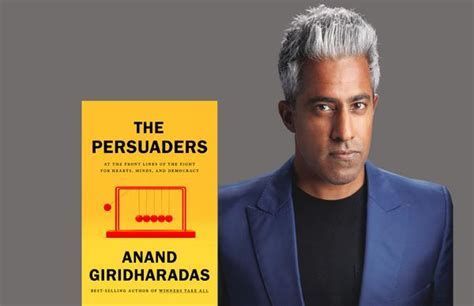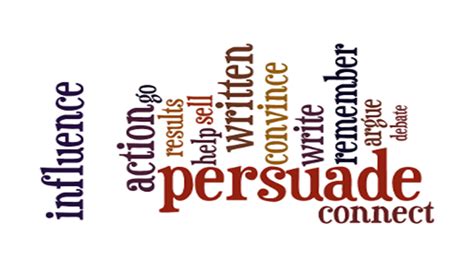
The Persuaders are #HeretoHear and Help Us Change
Blog post writers are supposed to avoid long titles. And confusing titles.
I failed on both fronts this week because recent events have finally forced me to deal with dilemmas and trade offs that have vexed my political life since the 1960s. In the simplest terms, how do we deal with the people we disagree with, especially if we interested in the kind of sweeping social, political, environmental, and economic change I’ve advocate for more than half a century?
I may never resolve them, but ideas from two seemingly unrelated sources helped me see (imperfect) ways forward that might actually make what we all do more effective in due course.
And as you’ll see, those last three words still leave me in grey area and with a great cop-out that, at some level, the dilemmas and tradeoffs are here to stay whatever progress I may have made in the past fifty years, not to mention the last two weeks.
The Dilemma(s) and Tradeoff(s)
The first dilemma/tradeoff hits all progressive activists as individuals. It affects us all differently depending on the ways we respond to the kinds of issues I’ll be outlining here along with some others I don’t have time to go into.
My version of the dilemmas, obviously, is different from yours, but in raising it, I hope to have given you tools that will allow you to put it into your own terms.
I am on the left. As my wife often reminds me, I’m not as far left as I was in my twenties, but in one key way, I may be even more radical now. As readers who know me will attest, I think in terms of paradigm shifts and systemic change that starts with intersectionality and goes from there.
So far so good, but here come(s) the dilemma(s).
I’m also convinced that policy changes are most likely to stick if they are accompanied by the adoption of new and deeply rooted cultural norms.
That’s not an ironclad rule, and I would never advocate forgoing new public policies in the absence of new cultural norms. And, cultural change that is not accompanied by policy changes can lead to frustration—and more.
However, I’ve spend my political career trying to build support for new core beliefs and doing so by building broadly based, inclusive coalitions.
And, that almost always involves working with people who do not share some or all of those beliefs, especially when we begin our political relationship.
In the process, I’ve developed an aversion to what is now referred to as call out culture, starting with my refusal to join in chants like “Hey, Hey, LBJ, how many kids did you kill today?” Like many of my fellow conflict resolution professionals, I joke that I’m actually conflict averse myself. Whatever the reasons, I’m just not comfortable blaming, naming, and shaming people I disagree with, including those I think are guilty of illegal, unethical, and immoral acts.
There is a lot of empirical support for taking positions that don’t demean the other side. In particular, it is hard to think of examples in which people have changed their mind because they have been heaped with abuse.
I’m convinced that it’s far better to start by offering the people I disagree with an alternative set of facts and other arguments that might convince them that I’m right. It’s not just providing them with data but with alternative world views or narratives in which they can see themselves abandoning the thoughts and actions that contribute to our disagreements. To that end, I have been convinced at least since the 1980s that coalitions around basic new principles can be built and can lead to that elusive paradigm shift that will give birth to a more just, egalitarian, and sustainable America—something that can only happen gradually and by reaching out to some of the very people who are on the “other side” today.
Yet, my lingering leftist has problems with this approach. Given the urgency of climate change, how long can we wait for deniers and skeptics to respond to our conciliatory approaches. Given the historic nature of racism and sexism, how dare I ask for patience so that people with lingering racist and sexist views can gradually accommodate themselves to the realities of life in the twenty-first century? As a white, cisgendered man who has benefited from all of those privileges myself? I constantly ask myself whether I’m selling out or at least too willing to accept “half a loaf” given the severity of the problems we face today.
There is actually more to the dilemma. I’m reluctant to endorse any kind of confrontational strategy that would compel people to change, including the use of any form of coercion, violent or otherwise. Here, I’m going to limit myself to the two strategies that I’m both happy with and have seen in a new light in the pasts couple of weeks.
The Persuaders
The first comes from one of my favorite journalists, Anand Giridharadas, author of the brand new book, The Persuaders. I had already pre-ordered the book and knew i would get to it eventually, but it moved to the top of my to-read list when his wife, Priya Parker, invited me (and the rest of her mailing list) to a book launch tea with Anand the Sunday before the book’s formal publication date.

I was blown away because his talk focused on how a variety of fairly well-known activists had dealt with their version of my dilemma. Many were to my left but all reached their version of the conclusions I have reached in my own work on connecting the dots in three ways, each of which builds on the previous one.
A movement has to grow in order to succeed. This first point might seem obvious. The kinds of movements he writes about and those I work with are not strong enough to have a chance of winning these days, whether “winning” involves public opinion, the electorate, or policy making at any level.
In other words, they will have to grow.
For good or ill, a lot of what I see happening gets in the way of that growth, including the way many of my peacebuilding friends deal with people who are not part of our “tribe.” That starts with the attitude(s) we take toward those we disagree with which all too often make it hard for the movements I believe in to expand their base of support.
Put simply, it is hard to expand that base at a time when what is often referred to as calling out culture dominates much of the progressive movement.
To be sure, there are people who should be called out. Most people reading this post would agree on who those individuals and organizations are. We can’t be true to our beliefs on race or climate change or economic equality or anything else unless we take on people who are on the other side, especially when their actions lead to harm, however you choose to define harm.
To be sure, too, there have been plenty of “performative” statements made by companies, political leaders, and others that seem to say “the right thing” but don’t include real commitments. I get it. I’ve seen plenty of that kind of tokenistic bandwagoning going back the protests of the 1960s. And there certainly has been plenty of it of late.
That said, I don’t think all of the people who do this kind of grandstanding do so cynically or even to simply cover their asses. Like the people Giridharadas interviewed, I don’t think we should always “call out” the people who don’t see things in exactly the same we that we do.
Although few of them actually put it this way, one thing I’ve learned from years as a peacebuilder is that it’s all but impossible to convince people that they are wrong if you start by attacking or demonizing or stereotyping them.
In other words, we should not duck the fact that we disagree and talk to each other. The act of talking across ideological lines alone isn’t going to accomplish unless we approach those discussions with the kinds of attitudes I’ll discuss in the rest of this section.
However, we stand a chance of reaching the people we disagree with if we approach them with a spirit of openness and curiosity. Why does my cousin like Donald Trump? My neighbor doubt that climate change is serious? My co-worker have qualms about affirmative action or the Black Lives Matter movement?
I grew up in the 1960s and had discussion after discussion about civil rights and Vietnam everywhere from my family’s kitchen table to Oberlin’s dormitories. In time, many members of my family and many of my classmates came around to my point of view. And, I changed a bit as well, although I never wavered in my commitment to racial equality or in my opposition to the war in Vietnam.
We made our movements grow as countless others have, most notably with the remarkable growth in support for marriage equality primarily since the beginning of this century.
Calling in rather than calling out. Giridharadas spends the bulk of the book trying to figure out how we can grow movements by asking the following question:
When fighting for justice and change, how do you bring others along—those who are not there yet, and those who are actively complicit?
I’d been asking similar questions for years, but didn’t have a term to use to describe what worked in that regard until I encountered the work of Loretta Ross, who is one of Giridharadas’ leading persuaders.
Indeed, I find her work so powerful, that I’ll focus on it here and let you learn about the others by reading his book. Hint. Hint.
Ross is a veteran civil rights activist and author whose social justice credentials are second to none.You could say that about plenty of people, but Ross stands out because she has taken to “calling in” the people she disagrees with in ways that she forcefully described in her 2021 TED Talk:
Early in her career, she actually was quite good at calling people out and had qualms when her civil rights mentors talked about calling in people with love.
Then, she ended up working with people from the “other side(s)” in efforts to help get them to change. Racists. Rapists. And the like.
She found that if she treated them with anger and hatred, she only deepened the divisions that separated them. Instead, if she created a space in which the other person—and she herself—could explore those differences with each other, something very different could happen. As she put it in the TED Talk,
So when you think somebody has done something wrong and you want to hold them accountable, you don’t react with anger or hate. You just remain calm and look at them calmly, and you tell them, “That’s an interesting viewpoint. Tell me more.”
There is no guarantee that they will move in your direction. But you open the door to its happening by engaging in what the late pollster and philosopher Daniel Yankelovich called a dialogue that is so intense that it leaves neither side unchanged.
I need to mention one qualifier here, which I’ll defer dealing with until next week’s blog post when I take on the implications of another powerful new book, Christopher Blattman’s Why We Fight.
As Ross herself and all of Giridharadas’ other interviewees point out, not everyone is good at calling people in. You have to have your own act together. You need to be self-aware and empathetic. It is hard to call someone in if you approach them with either fear or hatred, which many psychologists are convinced are highly interconnected with each other.
That’s another way of saying that the people you call in often share something my students all had—highly developed BS detectors. If you are accusatory or preachy or do anything that smacks of calling out, your calling in words are likely to fall on deaf ears.
Who do I reach out to? Finally, all of Giridharadas’ persuaders share at least one common strategic guideline. They know both that different people respond to different messages and that not everyone is open to any of your messages.
In other words, you have to do the best job you can of figuring out who is most likely to be open to being called in. Ross and climate scientist Katherine Hayhoe have actually arrayed people along continua which they use in determining how best to call any specific person in.
Although she has spent a lot of time with Ku Klux Klan members, Ross would argue that there could be as much as 10 percent of the population that you are so hostile to your point of view that it is hard to call them in. Hayhoe argued that there is a similar number of hard core climate change deniers out there.
Instead of focusing on them, persuaders are the most effective when they reach out to people who show at least some signs of being open to change. Thus, Ross is glade to work with the company that acts in a performative way or an employee who stumbles over gender pronouns in order to help them take the next step along that continuum. Hayhoe, who is an evangelical Christian who teaches at Texas Tech, has come up with ways of helping conservative ranchers see how climate change is affecting them.
In the process, as Giridharadas puts it, they broaden what policy wonks call the Overton Window of acceptable policy options for people and policy makers to consider. The very term Overton Window is indicative of where we need to go because it was coined by a libertarian intellectual in the 1990s to reflect what his community had to make their ideas more broadly popular. Now, Ross and the others in Giridharadas’ book as well as conservative climate activists like Hayhoe are calling on those of us on the left to do the same thing.
As regular readers know, I was deeply influenced by Everett Rogers’ model of how new ideas move through populations. In essence, these persuaders are saying the same thing. Start with people who are likely to be open to being called in. And then focus on those who are opinion leaders in their own communities, because they have the capacity to bring others along with them, at least in due course.
#Here to Hear
That brings me to the second strategic option and what my peacebuilding/conflict resolution community can bring to the table.
I was invited to Giridharadas’ launch discussion because I’m on Priya Parker’s mailing list, Parker is a force of nature in her own right who has turned more than a decade of work in sustained dialogue and other conflict resolution techniques into a new kind of expertise which she calls the “art of gathering,” some of which clearly found its way into her husband’s book!

So, it is not surprising that I found myself asking about the niche(s) in the persuaders’ work that the people I work with could fill most effectively. And since I had just been to a board meeting of the National Association for Community Mediation (NAFCM) the afternoon before I started his book, I realized that one of the themes it stresses would make it easier to call people in effectively.
NAFCM and community mediation in general date from the Civil Rights Act of 1964. That puts them in an intriguing place for calling people in. Yes, they use the traditional tools used by all mediators. However, because of their origins, the centers and their staffs do not adhere to the strict neutrality that other mediators insist on.
Instead, although I’ve never heard any of my colleagues use the term, they want to be on the right side of history. But, they want to get us there by calling people in.
Or, to use a phrase that they come back to time and time again, they want to “hold space” so that the kinds of discussions Ross and the other persuaders talk about can occur. What they do varies dramatically across the 400 or so centers nationwide. That only makes sense because the communities they serve are themselves very different.
One thing that ties them all together is a hash tag the centers have been using to try to focus national attention on their work—#heretohear. That’s what they do. They create and provide the physical and emotional spaces in which anyone and everyone can be heard.
During this decade, NAFCM has worked with other organizations to protect American democracy from the threats coming from efforts to restrict and suppress the vote, racism, violence, and more.
But as I read Giridharadas’ book, I realized that NAFCM, my colleagues at the Alliance for Peacebuilding, and more have an important role to play in the work of calling in. Most of us are good at listening, holding space, facilitating dialogue, and being part of gut-wrenching dialogues, all of which are very much what this country needs right now.
Of Course That’s Not Enough
No one would dream of arguing that these strategic ideas are all you need to build a movement that will, as I jokingly put it, “change the world by next Friday.”
In fact, there are lots of things that I know this kind of persuasion cannot address, which I assume Giridharas and my friends both share.
To begin with, it is all but impossible for social change movements anchored in persuasion to grow quickly despite everything we know about tipping points. In my own family, it took a couple of years of dining room conversations before my father changed his mind on civil rights or Vietnam. My mother never did. Yet, on issues as different as racism and climate change, time is of the essence. As a result, persuasion has to be part of a larger strategy that also includes, for example, getting the relevant issues on the public agenda in a way that suggests that we all have something to contribute to produce the needed change and that we have to figure out what that is together.
Similarly, persuasion alone will not necessarily lead to the enactment of new and more appropriate policies in either the public or the private sector. But again, as regular readers know, I’ve long believed that the adoption of new norms on core cultural values is a necessary but not sufficient precondition for lasting and dramatic social change.
Finally, taking these two points together opens me to the most powerful critique of these kinds of strategies that I actually share. Put as bluntly as possible, I write with the privilege of an older white man. I can support a gradualistic approach because I don’t directly suffer from racism or sexism. Along those same lines, unlike my grandkids who were born in the 2010s, I’m not going to live long enough to suffer from the most damaging effects of climate change.
Still, I’m convinced that the kinds of strategies Giridharadas write about are one key way to go. And, if we learn these and other lessons in his’ book, we can take some giant steps toward changing the world, though certainly not by next Friday.
The views and opinions expressed in this article are those of the author and do not necessarily reflect the official policy or position of the Alliance for Peacebuilding or its members.
Also published on Medium.





